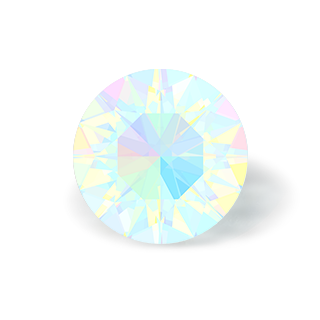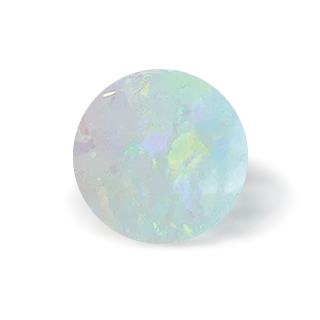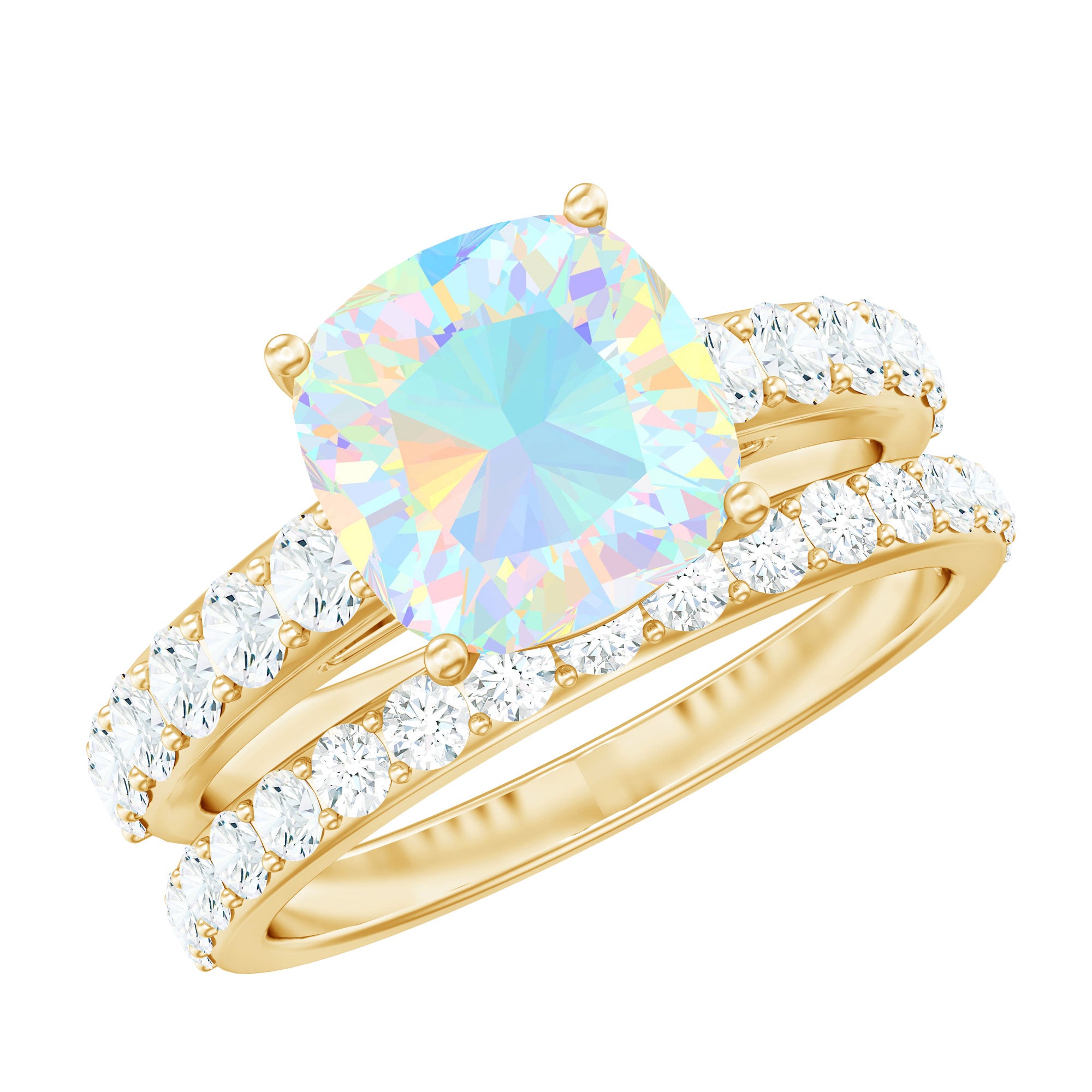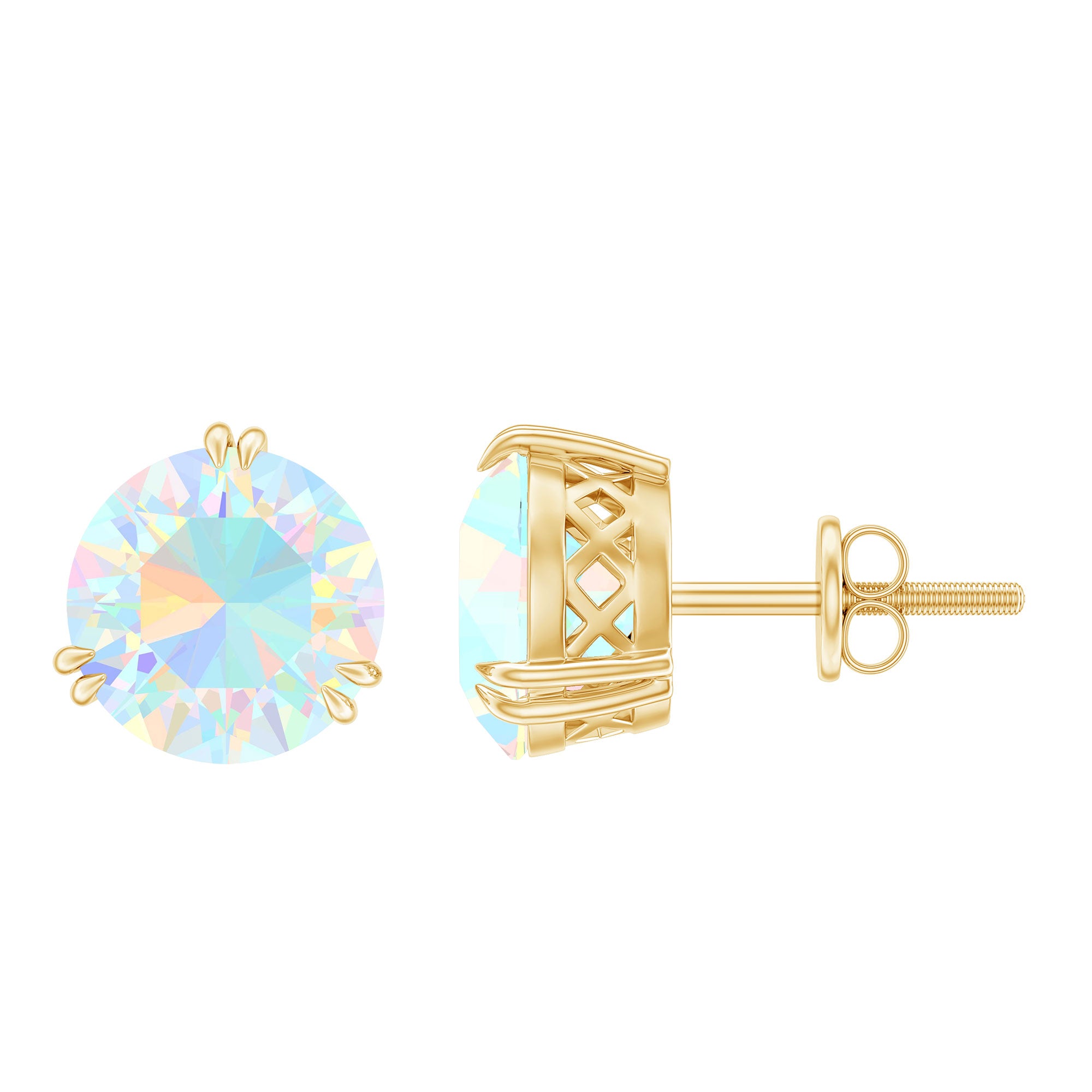All About Ethiopian Opal: Types, Colors, Description, Origins & Details
The vibrant color flashes of Ethiopian Opal can sure make you go all awe of its beauty. We’d label it as rainbow in the form of a gemstone. Fascination for this unique gemstone would never end. And of course with fascination comes great amount of curiosity to go out there and explore it more. Did you know the name ‘opal’ itself comes from Greek word ‘opallios’ which refers to a change in color. Our Ethiopian Opal education is the overall guide to buy Ethiopian opal to answer all your questions. We address all the basic knowledge revolving around Ethiopian opal ranging from the history and origin to the famous 4 C’s of the October birthstone and properties to make a prudent decision while setting out to buy Ethiopian Opal jewelry. Ethiopian Opals fall into the category of semi-precious gemstone, therefore it is important to choose them right. Let’s give you a fun ride filled with a dose of Ethiopian opal education.
Properties of Ethiopian Opal
Hardness
Having a hardness rating of 6 on Moh’s scale, Ethiopian opal sure requires a little extra care when worn on a regular basis.
Composition
Thanks to the water content of Ethiopian opals which is hydrophane and its chemical composition consisting of silica gel, Ethiopian opal shows a vibrant play of colors.
Luster
The luster of Ethiopian opal is sub vitreous to waxy meaning almost glass like with a refractive index of 1.37 to 1.47 and are known to be opaque, translucent and transparent. Got an idea why it holds such a craze for its appearance?
Origin & History
The most engrossing part we can bet! You wouldn’t believe that although the first opal was officially discovered in 1900s, its history dates back to as early as 4000 BC in Kenya which were quite useful back then in making tools. Since quite long, opals have been considered to have spiritual powers. Thanks to its playful vivid color hues, it has been considered extremely lucky, specially for all the October borns out there and even referred to as the queen of all gemstones. Such was the craze that in 75 AD, Pliny, a roman scholar, believed Ethiopian opal to be a mixture of ruby, emerald, topaz, sapphire and amethyst, every gemstone together.
Where is Ethiopian Opal found?
Although the craze was this gemstone has been on a rise for like forever but it was first discovered in 1994 in northern Shewa province of Ethiopia, particularly in Menz Gishe and then again began to be mined in Wegel Tena in 2008 and Wello in 2013. It is even referred to as Wello stone thanks to that. And you already would’ve gotten the idea why it’s called Ethiopian opal by now.
Ethiopian Opal versus Australian Opal

Ethiopian Opal
Ethiopian opal are usually mined in Wollo Province in Ethiopia and are more new to the market than its counterparts. The premium feature of these opals is that these are hydrophane meaning they can absorb water and thus display a charismatic play of colors. Ethiopian opal are also less in hardness because of that.

Australian Opal
Coming straight from the mines of Australia, just like its name suggests, Australia opal don’t possess any water content and has been there for quite long and has become quite common now. It also consists more hardness since it is not porous.
Ethiopian Opal Quality and Price Filters
What is the best feature of Ethiopian Opal, you must be wondering if you’re planning to buy opal jewelry. Thinking how to buy ethiopian opal already? This is the place for you. Let’s get you well versed with its quality, specifically the 4 Cs (cut, color, clarity and carat).
Color
Identifying the color of Ethiopian Opals can be quite tricky as well as fun and unlike the colored gemstones, the desired characteristic for the opal is translucent to transparent body colors coupled with play-of-color in patterns. Ethiopian Opal is usually found in orange and warm yellow hues of the fire opal, milky whites and a clear crystal opal.
Clarity
Identifying the color of Ethiopian Opals can be quite tricky as well as fun and unlike the colored gemstones, the desired characteristic for the opal is translucent to transparent body colors coupled with play-of-color in patterns. Ethiopian Opal is usually found in orange and warm yellow hues of the fire opal, milky whites and a clear crystal opal.
Carat
Ethiopian Opal weight is measured in terms of Carat Weight usually shortened to Carat or Cts is known to range between 0.01 to 2 CT approximately.
Cut
The overall color and brilliance of the Ethiopian Opal can be determined by the Cut offered by skilled cutting. Therefore, any skilled cutter keeps in mind the overall shape, width, depth and faceting of a Ethiopian Opal. The skills of the cutter contribute to the beautiful sparkle of the gem as much as the conditions which led to its formation.
Ethiopian Opal Grading Value
How to judge the quality of this October birthstone? Is it the cut or is it the clarity? How do you categorize the same? Well, actually it is pretty easy. You just have to take a look at the grades that the gemstone belongs to with our Ethiopian opal guide:
Patterns Grading
The rule is: more unique the pattern, more the value! Have you seen any other gemstone graded on the basis of this rule? The most unique pattern of this October birthstone is known to be Harlequin which is broad yet angular. Apart from that, other pattern including Broad fish, pinfire, rolling flash, mackerel, block and rainbow are one of the most sought after.
Brightness Grading
Graded on a scale from B1 to B7 on the basis of brightness ranging from vivid, very bright, bright to moderate and subdued, Ethiopian opal possessing more brightness are more in value as well. What else is the USP of this October birthstone?
Color Grading
Well the color grading rule of Ethiopian opal is: brighter the color, more valuable the Ethiopian Opal with red being one of the most valuable and rare color flash out of the lot, followed by blue and green.
Benefits of Ethiopian Opal
Purchasing this gemstone is like purchasing a unique combination of beauty and benefits. Why? Well, this October birthstone possesses some wholesome benefits that can sure allure the wearer. Let’s take a look with our Ethiopian opal buying guide:
Physical Healing
An Ethiopian opal since long has been known to help the wearer with kidney infections along with blood purification. Apart from that, it also helps with skin, hair and nail problems. Yes, everything combined! It is also known to help with lung problems and hearing problems. And last but definitely not the least it is also known to help women with reproductive and fertility issues. That combined with the vivid charm of this October birthstone makes it such an alluring pick for women.
Emotional Healing
Just like its radiant color, it is known to radiate positivity in the life of the wearer, thus blessing his life with loyalty and faith. So much so that the different color hues that it possesses, all carry a meaning with green standing for cheerfulness, brown denoting wisdom and white bringing freedom. Yes, the positive effect of all of that combined!
Spiritual Healing
Again just like its color, it is believed to help the soul meet heaven since ancient times. That is, it is known to help the wearer communicate with divine forces of heaven and that’s exactly what it’s known for. It works as a protective stone, thus keeping you away from negative energies. Having ties with Mercury, it is also known to make the wearer more religious.
Frequently Asked Questions
How is an Ethiopian Opal formed?
Ethiopian opals are hydrophane opals formed as the result of volcanic activity giving rise to nodules within the volcanic ash in stratum between rhyolite layers. The word hydrophane here means “water-loving” due to the fact that they absorb water.
What is difference between lab grown and natural Ethiopian Opals?
Like most of the gemstones, there is an option to choose between natural and lab-created Ethiopian Opals. One must not confuse “lab grown” with the “fake”. While synthetic is a replica the lab grown is developed in a controlled lab environment.
Notably, there arise two major difference in both categories on the basis of their origin and the price in the market.
Where do Ethiopian Opals come from?
Ethiopian Opals were first mined in 2008 in Ethiopia’s northern Welo district. Various deposits were later discovered in Australia’s Coober Pedy mines.
How to take care of Ethiopian Opal Jewelry?
Ethiopian Opal Jewelry is quite easy to clean due to their hardness and durability. However, a few things must be kept in mind like avoiding contact of the gemstone with make-up, harsh chemicals, abrasives.
While cleaning the jewelry make use of lukewarm water and mild cleaning detergent. Soft toothbrush can be used to clean the underside of the ethiopian opal.
Also, the jewelry must be individually kept to avoid contact with other jewelry to avoid unnecessary scratches.
What is a Ethiopian Opal certification?
The most common Ethiopian Opal Certifications includes from GIA, IGL and HRD labs. It is usually a document you receive on the behalf of the aforementioned 3rd party labs which describes an opal in all of its characteristics.
Each and every party’s defining grounds may defer.
What is the birthstone of Ethiopian Opal?
Ethiopian Opal, a unique semi-precious gemstone, is known to be the birthstone of October.
Are Ethiopian Opal good quality?
Ethiopian Opal is world known for its vibrant color hues and that’s exactly what makes it so special. You wouldn’t witness any other gemstone displaying such a vibrant, vivid and unique play of colors. That’s exactly what adds to the quality of this October birthstone.
What are the patterns in Ethiopian opal?
The unique patterns of Ethiopian Opal range from broad pattern crystal, patchwork rolling flash, patchwork honeycomb, fish scale honeycomb, pin fire crystal, neon flesh pattern, welo broad pattern and rainbow pattern.
Conclusion
Ethiopian Opal: probably the most special gemstone out of the lot thanks to its vivid color hues. Nothing matches the uniqueness of this October birthstone, isn’t it? We know how the unique hues of this semi-precious gemstone would’ve gotten you curious to know everything under the roof about it. And that’s exactly why we have come up with our Ethiopian Opal education guide to get you well versed with the intriguing history and benefits to the informative properties and 4 Cs. We hope you had you share of fun and had something to take away. That being said, here we sign off wishing you all the luck in choosing your favorite Ethiopian Opal jewelry.




